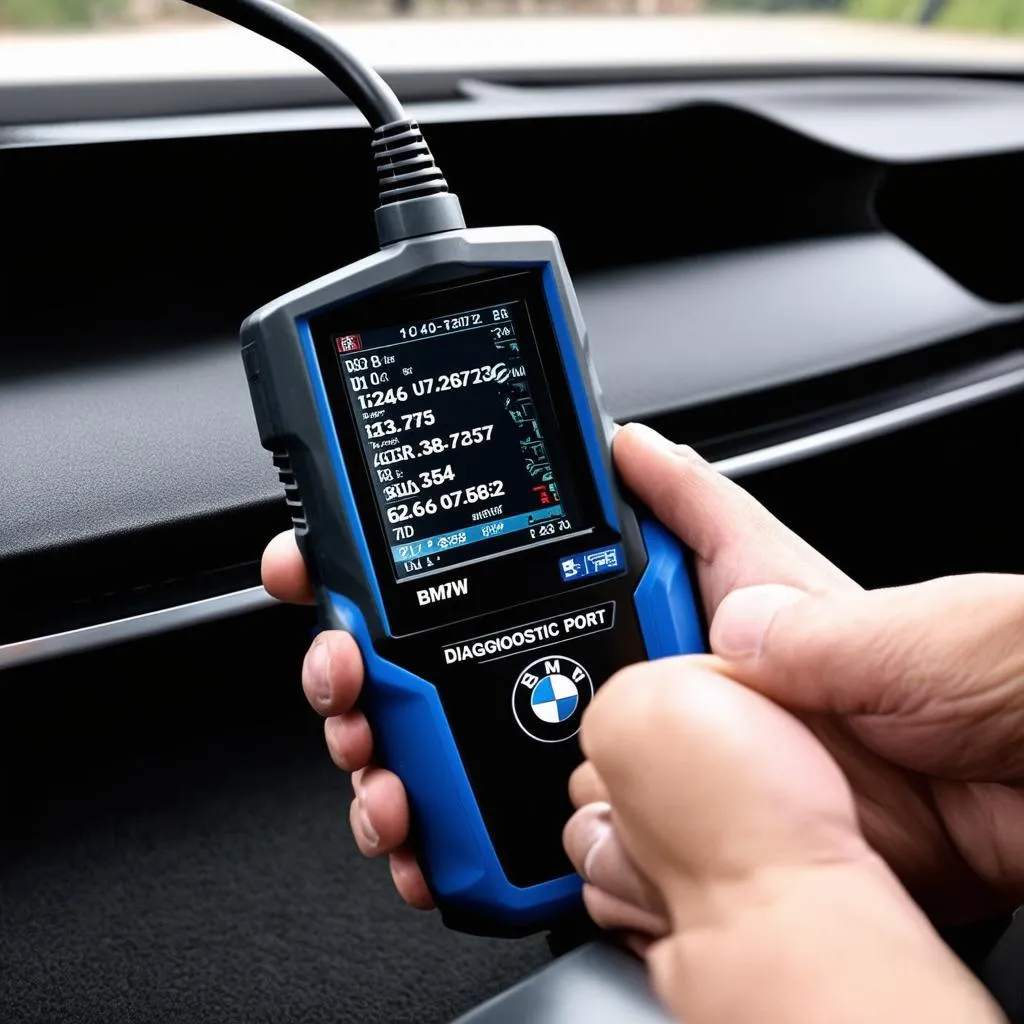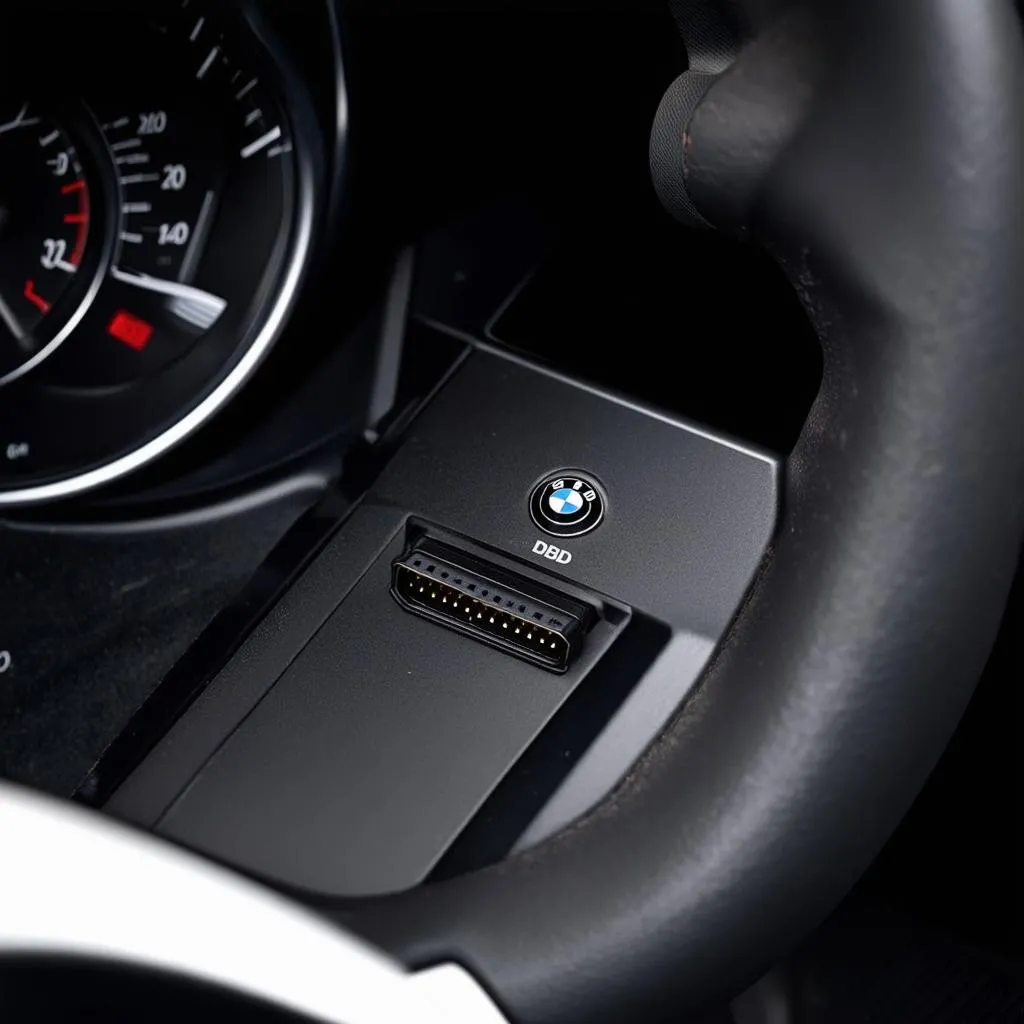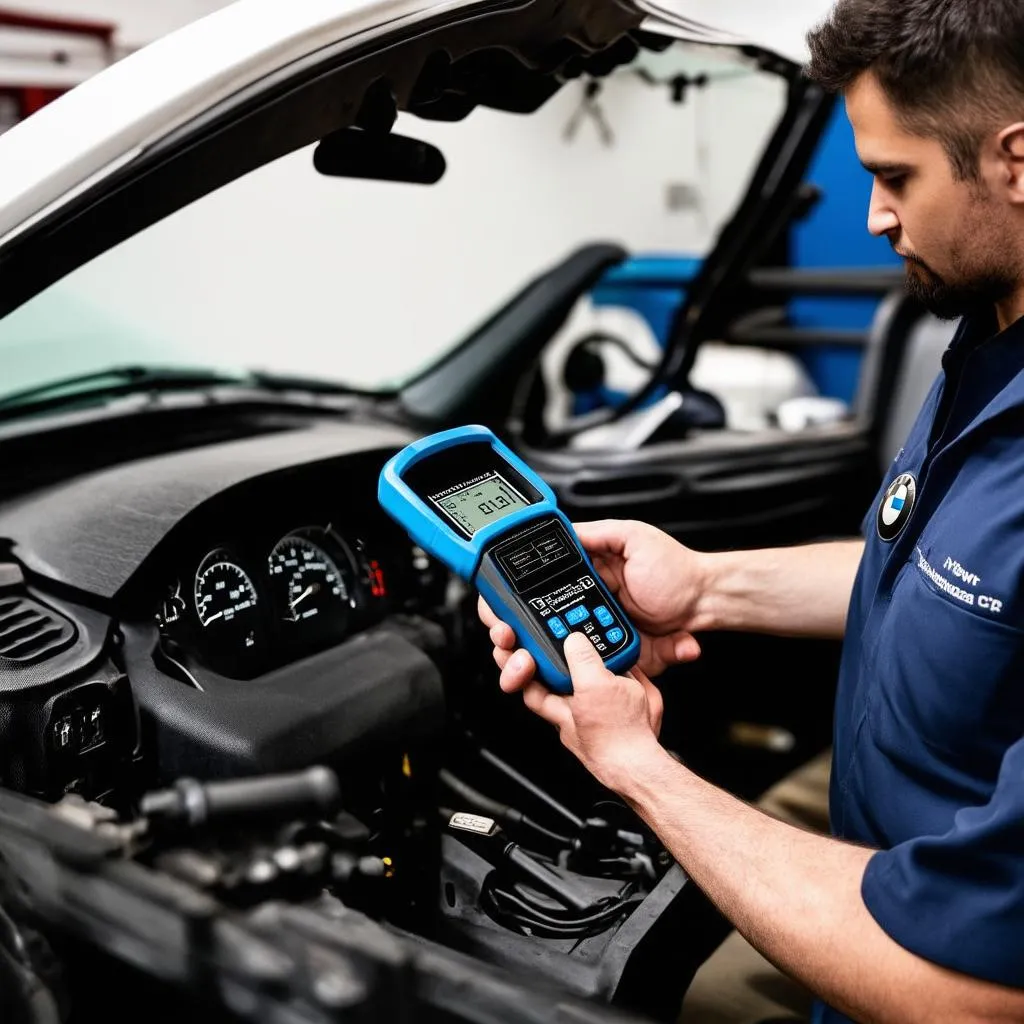Have you ever wondered what the mysterious “OBD2” port on your BMW is for? You’re not alone. Many car owners, even experienced ones, are unfamiliar with this vital tool for vehicle diagnostics. Today, we’re diving deep into the world of BMW OBD2, revealing its secrets and answering your burning questions.
Imagine this: you’re driving your BMW down the highway, enjoying the smooth ride, when suddenly, the engine starts sputtering and the “check engine” light flashes ominously. Now what? That’s where OBD2 comes in. It’s like a secret decoder ring for your car, providing you with invaluable insights into what’s happening under the hood.
Understanding BMW OBD2: A Gateway to Your Car’s Health
OBD2, short for On-Board Diagnostics 2, is a standardized diagnostic system found in most cars built after 1996. Think of it as your car’s own personal doctor. It allows you to communicate with the car’s computer system and retrieve data about its performance, potential issues, and even historical records.
The Importance of OBD2 for BMW Owners
OBD2 is crucial for BMW owners for several reasons:
- Troubleshooting & Diagnostics: It allows you to identify the root cause of engine issues, saving you time and money by pinpointing problems before they escalate.
- Performance Tuning: Some BMW enthusiasts use OBD2 to access and adjust engine parameters, potentially improving performance and fuel efficiency.
- Emission Monitoring: OBD2 helps ensure your BMW meets environmental standards by monitoring its emissions and alerting you to potential problems.
What Does BMW OBD2 Reveal?
The OBD2 system can provide information about:
- Engine Performance: Engine RPM, fuel trims, air/fuel ratio, and other vital engine data.
- Emissions: Oxygen sensor readings, catalytic converter status, and other emissions-related parameters.
- Transmission: Transmission temperature, gear selection, and other transmission-related data.
- Safety Systems: Airbag status, ABS system status, and other safety system data.
What You Need to Know about BMW OBD2: Common Questions Answered
1. Where is the OBD2 Port on my BMW?
The OBD2 port on BMWs is typically located under the steering wheel, near the dashboard.
2. How do I use a BMW OBD2 Scanner?
You’ll need a dedicated OBD2 scanner to access and interpret the data stored in your car’s computer system. We’ll discuss the best OBD2 scanners for BMWs in detail later.
3. Can I use a generic OBD2 Scanner on my BMW?
While some generic OBD2 scanners may work with BMWs, it’s best to use a scanner specifically designed for BMWs. These scanners offer more extensive diagnostics, coding capabilities, and support for the latest BMW technologies.
4. What are the benefits of using a BMW OBD2 Scanner?
As mentioned before, BMW OBD2 scanners provide more in-depth diagnostics, access to advanced coding features, and support for all BMW models, including the latest ones.
5. How do I find a reliable BMW OBD2 Scanner?
When choosing a scanner, consider:
- Compatibility: Ensure the scanner is compatible with your BMW model and year.
- Features: Look for a scanner with advanced features such as live data streaming, code reading, and coding capabilities.
- Ease of Use: Choose a scanner with a user-friendly interface and clear instructions.
6. What are the best OBD2 Scanners for BMWs?
We recommend checking out our in-depth review of the best OBD2 scanners for BMWs [https://techcarusa.com/best-obd-2-scanner-for-bmw/].
7. Can I reset the “Check Engine” light myself?
Yes, you can often reset the “Check Engine” light using an OBD2 scanner. However, it’s essential to address the underlying issue causing the light to illuminate. You can find more information on resetting the “Check Engine” light [https://techcarusa.com/bmw-m2-obd-port/].
8. Is there a hidden OBD2 port on older BMW models?
Some older BMW models (like the 2000 BMW 740i) might have a hidden OBD2 port. [https://techcarusa.com/2000-bmw-740i-obd-inside-port-says-no-link/]
9. What should I do if the OBD2 port on my BMW won’t come out?
This can be a common problem, especially on older BMWs like the 2004 BMW 545i. [https://techcarusa.com/bmw-545i-2004-obd-port-wont-come-out/] It’s essential to handle this carefully and avoid damaging the connector.
10. Where is the OBD2 port located on my 2017 BMW X1?
The OBD2 port on a 2017 BMW X1 is typically located under the dashboard. You can find a detailed guide on locating the port [https://techcarusa.com/2017-bmw-x1-obd-location/].
11. Does BMW OBD2 have any spiritual significance?
The spiritual realm doesn’t typically overlap with OBD2 technology. However, some might view the ability to connect with their car’s computer system as a form of “knowing” their vehicle more intimately, which could be seen as a spiritual connection.
Empowering Yourself with BMW OBD2
Understanding BMW OBD2 is like unlocking a new level of connection with your car. It empowers you to become more informed and proactive about your vehicle’s health, saving you potential headaches and expensive repairs down the road.
Remember, OBD2 is a powerful tool for any BMW owner. You don’t have to be a mechanic to benefit from its insights. Embrace this technology and discover the world of knowledge hidden within your BMW!
 OBD2 scanner connected to a BMW
OBD2 scanner connected to a BMW
 Location of the OBD2 port on a BMW
Location of the OBD2 port on a BMW
 Mechanic using an OBD2 scanner to diagnose a BMW
Mechanic using an OBD2 scanner to diagnose a BMW
Want to learn more about BMW OBD2 and explore the full potential of diagnostics tools? Contact our team of expert car mechanics via Whatsapp at +84767531508 for personalized assistance and 24/7 support! We’re here to help you unlock the secrets of your BMW and keep it running smoothly.